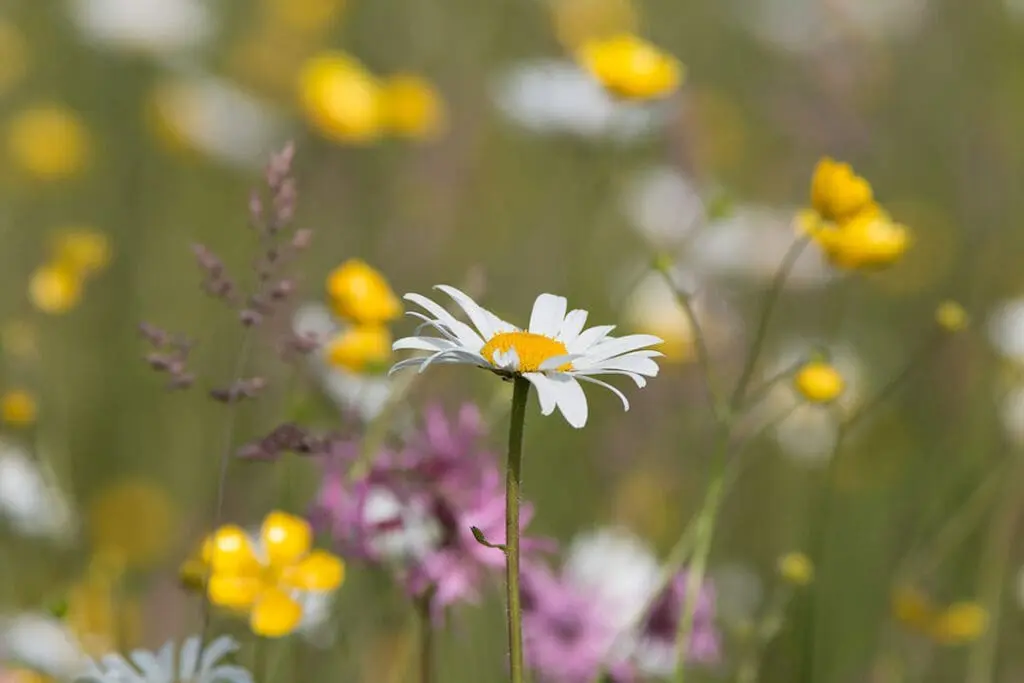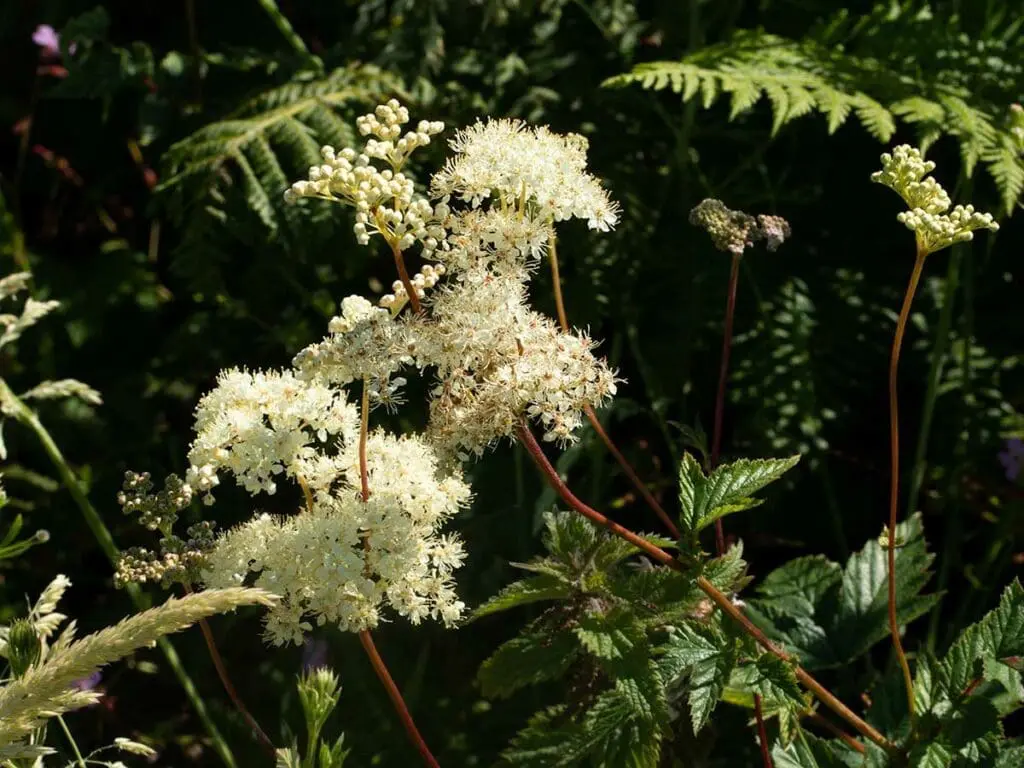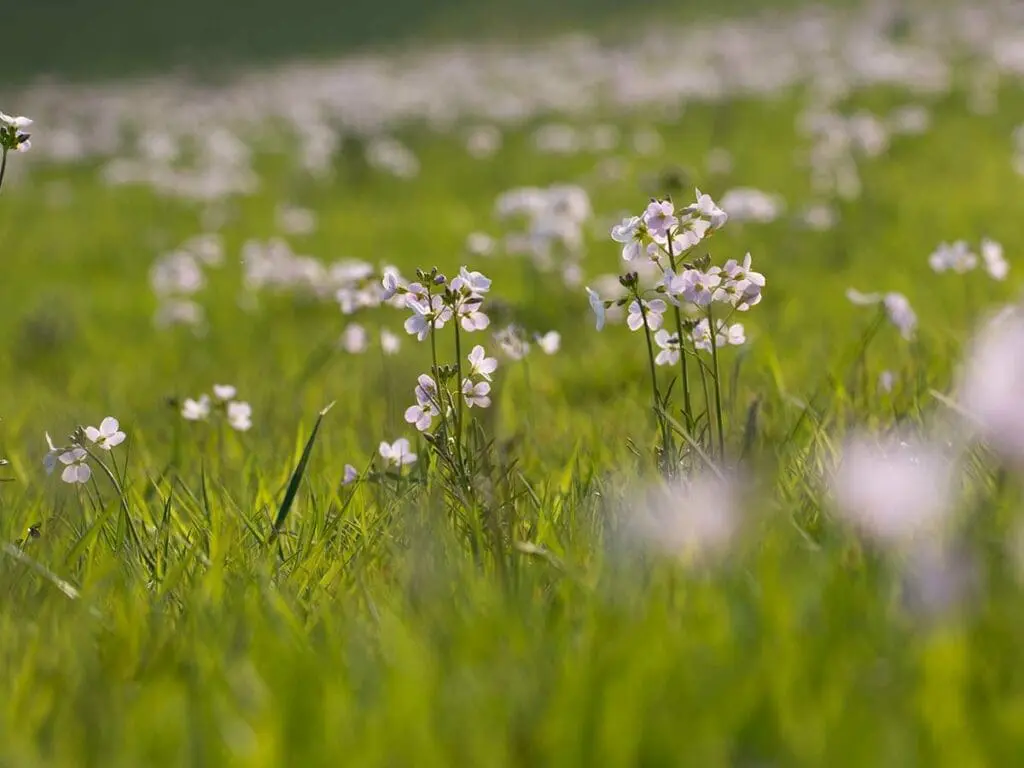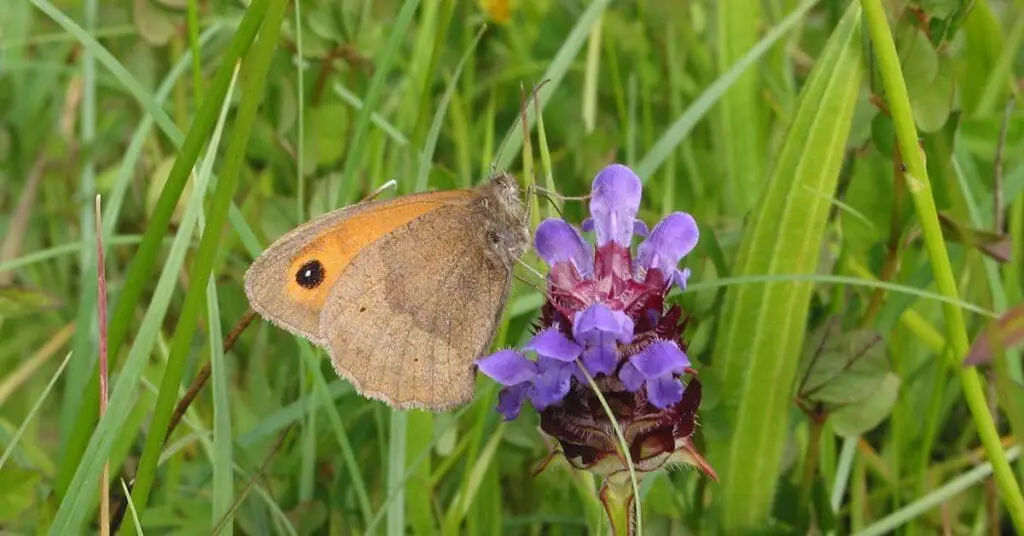- Scientific name: Leucanthemum vulgare
- Family: Daisy (Asteraceae (formally Compositae))
- Found in: Grassland
The Ox-eye Daisy is a familiar native wildflower seen across the UK in fields, roadside verges, railways and riverbanks.
The name ‘ox-eye’ was a flattering name affectionately given to Hera, the queen of Olympian gods in Greek mythology, in the Illiad. Early Christians dedicated this flower to Mary Magdalene which is how the name Maudlin Daisy originated and the name Dun Daisy arose from the flower being connected with the god of thunder. Celtic legend told how daises were the spirits of young children that died during birth.
This hardy perennial grows from 30cm to 90cm in height. The stem is long, thin and hard with occasional branching along the stem. Positioned at the end of the stem is an apparent yellow and white flower. Each “flower” is actually composed of many hundreds of flowers or florets. The yellow centre is composed of “disc florets” and the white “petals” are “ray florets”.
Ox-eye Daisy comes into bloom in late May and continues to flower until the end of October although it is at its peak towards the end of June. The leaves are small with a rough-toothed edge and those near the root are more round in shape with long stalks.
Many insects don’t like Ox-eye Daisy as the whole plant has a bitter, pungent juice within it. For this reason, in older times the juice of the plant was often mixed with the bedding of farm animals as a repellent to insect pests. Some people believe that it repels flies if it is planted near the house. Although some farm animals such as sheep, goats and horses will graze on Ox-eye Daisy, cows and pigs will not touch it. It is thought that cows that do eat this plant produce bitter tasting milk.
Despite having a bitter taste, young leaves of Ox-eye Daisy are eaten in salads in parts of Italy although the plant is not renowned for this use. There are many medicinal uses that have been derived from this plant throughout the ages. The whole plant was said to have medicinal benefits and was used in many ways including tonics to ease the effects of whooping cough, night sweats, asthma and nervous conditions. The herb was also taken as a cure for jaundice. Externally, Ox-eye Daisy was used in the treatment of ulcers, bruises, cuts and conjunctivitis, although it can be an irritant to the skin. It should be noted that although Ox-eye Daisy was used in the above ways, to what extent it proved effective is unclear and a recognised herbalist should be consulted before use.
Propagation
From seed
Ox-eye Daisy is very simple to grow from seed. Each floret on a flower head produces a seed. The seed is often 70-80% viable and will produce many plants with little effort or skill required. In either spring or autumn, fill a seed tray with a soil based compost and simply scatter the seed onto the surface. When the seed has been sown, lightly cover with more compost. Soil should be kept moist and the seed should then germinate within two weeks. Seedlings can then be pricked out and potted up to be planted out when a little bigger.
By division
Ox-eye Daisy can also be propagated vegetatively by splitting large plants in spring or early autumn.





